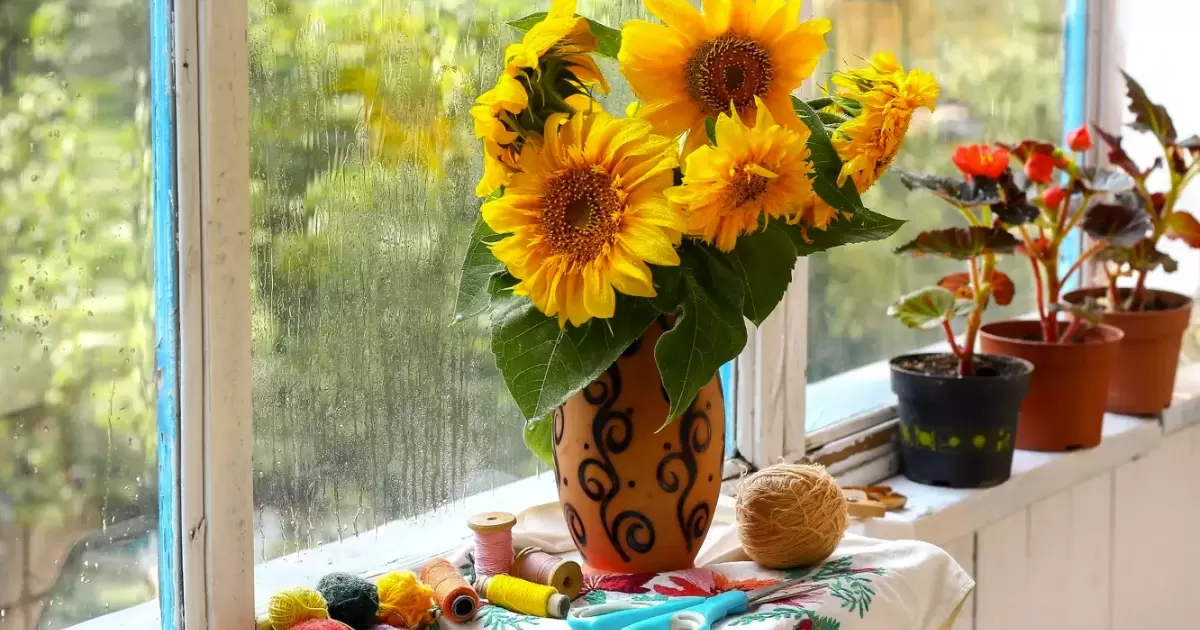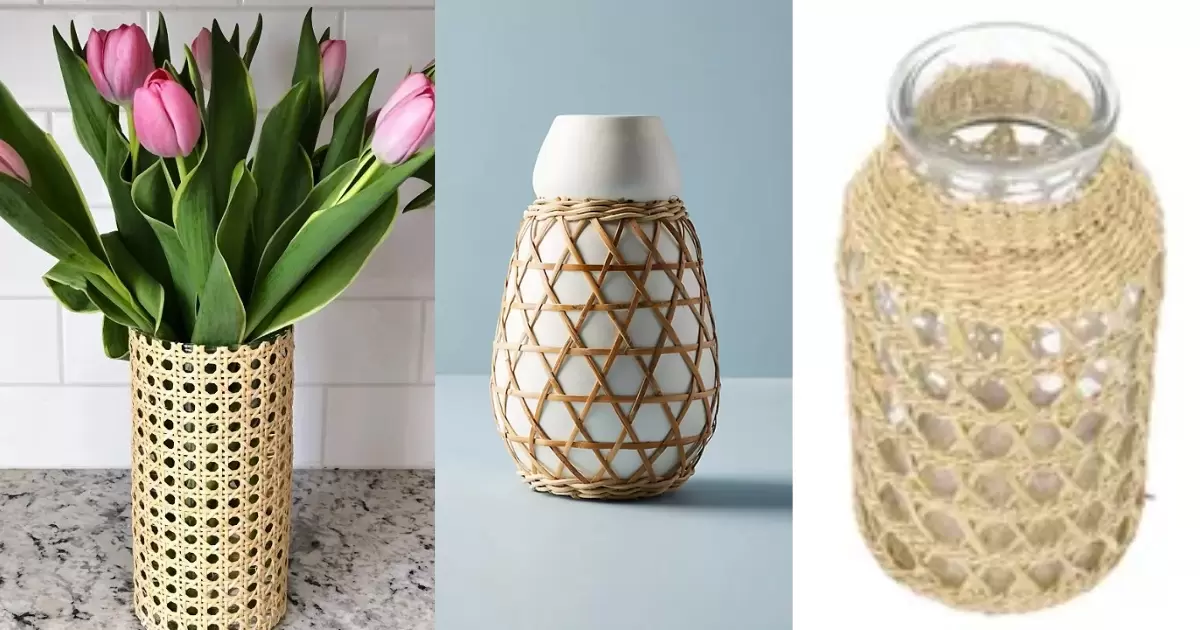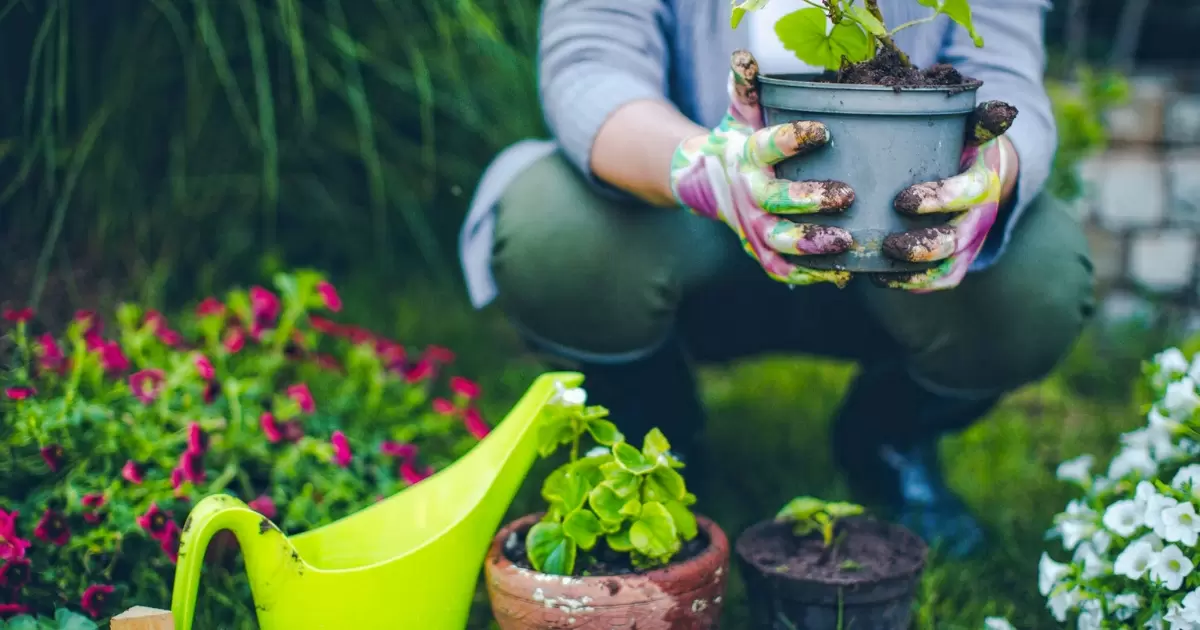To care for sunflowers in a vase, start by trimming the stems at an angle with sharp scissors. Remove any leaves below the water line to keep it clean. Place the sunflowers in a clean vase filled with fresh water. Change the water every two days and recut the stems for longer-lasting, vibrant blooms.
Want your sunflowers to shine longer? Here's how to care for sunflowers in a vase: Trim stems at an angle with scissors, remove lower leaves, and use a clean vase with fresh water. Change the water every two days, recut stems, and keep them away from direct sunlight and fruits.
Extend the life of your sunflowers effortlessly with these simple steps on how to care for sunflowers in a vase. Trim stems at an angle and remove lower leaves to keep the water clean.
Trim The Stems
Trimming the stems is key to sunflower longevity. Use sharp scissors to cut at an angle for maximum water absorption. Clear the lower leaves to maintain cleanliness. This simple step sets the stage for vibrant, long-lasting blooms.
Keep those scissors handy for stem maintenance. Every two days, recut the stems to ensure continuous water uptake. This straightforward act revitalizes the sunflowers, enhancing their freshness.
Add Tepid Water To Your Vase
Start by filling your vase with tepid water—a comfortable home for your sunflowers. Trim the stems at an angle, allowing them to drink up in this nourishing environment. Remove the lower leaves to keep the water fresh and clear.
This simple step sets the stage for a sunflower spectacle in your vase. Recut the stems, following the guide on how to cut sunflowers in a vase, to ensure a constant supply of nutrients. By keeping the water clean and the temperature just right, you're laying the foundation for vibrant sunflowers that stand tall and proud in your vase.
Change The Water
Change the water regularly to keep your sunflowers happy. Swap out the old water for fresh every two days, ensuring it stays clear. This simple step prevents bacterial growth and keeps your blooms vibrant.
Recutting stems before placing sunflowers in freshwater is key. Trim at an angle for maximum water absorption, extending the life of your beautiful bouquet. This easy routine ensures your sunflowers in a vase stay fresh, brightening up your space.
Add Sugar And Lemon To The Vase
Enhance your sunflowers by adding a touch of sweetness. After trimming the stems and placing them in a clean vase with fresh water, stir in a spoonful of sugar. This natural sweetener nourishes the flowers, extending their vibrant display.
When arranging sunflowers in a vase, consider adding a slice of lemon for an extra boost. The acidity helps water travel up the stems, keeping your sunflowers perky. It's a simple hack to elevate how to arrange sunflowers in a vase and enjoy their beauty even longer.
Place Out Of Direct Sunlight
After arranging sunflowers in a vase, remember to place them away from direct sunlight. Sunflowers thrive better in indirect light, maintaining their vibrant hues.
Direct sunlight can cause them to wilt and diminish their beauty, so choose a spot that offers a gentle, diffused glow. This simple step ensures your sunflowers stay fresh and lively for an extended period of time.
5 Common Reasons Why Your Flowers Are Dying
Here are some common reasons to avoid your flower's health:
Overwatering
Too much love can drown your sunflowers. Overwatering is a common mistake in caring for sunflowers in a vase. Change the water every two days, but ensure not to flood the vase; a few inches are just right. Keep it simple, and your sunflowers will thank you with prolonged freshness.
Underwatering
Neglecting water? Ensure the sunflowers in a vase stay hydrated for a vibrant display. Trim stems at an angle and change water every two days. Without enough water, sunflowers droop prematurely. Keep them happy with a replenished drink.
Nutrient Imbalance
Ensure your sunflowers thrive by addressing nutrient imbalance. Begin by trimming stems at an angle and removing lower leaves for a clean start. Opt for a vase with fresh water, changing it every two days and recutting stems. Shield them from direct sunlight and fruits to maintain a balanced environment, promoting vibrant, long-lasting blooms.
Sunlight
Sunlight plays a crucial role in sunflower care. Find a bright spot, but not in direct sunlight, to display your vase. Sunflowers thrive with ample natural light, ensuring they stay vibrant and cheerful.
Excessive Heat
Excessive heat can be a sunflower's foe. When caring for sunflowers in a vase, avoid placing them in direct sunlight, especially during scorching days. Sunflowers thrive in warmth, but too much heat can lead to premature wilting.
Best Time to Fertilize Sunflowers
|
Timing |
Description |
|
Early Spring |
Start fertilizing when soil temperatures reach around 50°F (10°C) to promote healthy root development. |
|
Pre-Blooming Stage |
Apply a balanced fertilizer with higher phosphorus content a few weeks before sunflowers start blooming to support flower and seed formation. |
|
Mid-Summer |
Consider a nitrogen-rich fertilizer to sustain vigorous growth during the height of the growing season. |
|
Post-Blooming |
Once sunflowers have bloomed, shift to a fertilizer lower in nitrogen to encourage the plant to allocate energy to seed development. |
|
Soil Test |
Conduct a soil test to determine specific nutrient needs, adjusting fertilizer types and amounts accordingly. |
|
Organic Options |
Explore organic fertilizers like compost, well-rotted manure, or fish emulsion, which can provide a slow-release nutrient source. |
|
Avoid Late Fall Fertilization |
Refrain from fertilizing sunflowers too late in the fall, as it may stimulate new growth that won't have sufficient time to harden off before winter. |
How Often Should Sunflowers Be Watered?
Once your sunflowers are in a vase, the question arises: How often should sunflowers be watered? The key is moderation—water them every two days to keep the soil consistently moist.
Avoid overwatering, as it can lead to root rot. Consistent watering strikes the right balance, ensuring your sunflowers stay fresh and vibrant for longer.
Sunflowers Need Protection In The Winter
As winter approaches, it's crucial to protect your sunflowers. Learn how to care for sunflowers in a vase. Harsh cold temperatures can damage these vibrant blooms.
Covering them with a layer of mulch helps insulate the soil, keeping the roots cozy. Remember, a little winter care ensures your sunflowers return with their radiant charm come spring.
Frequently Asked Questions
How do you get rid of dead sunflowers?
To get rid of dead sunflowers, simply cut the stems close to the base using sharp scissors or pruning shears. Dispose of the dead flowers in compost or green waste.
What is the best time of day to cut sunflowers?
The best time of day to cut sunflowers is in the morning, just after the dew has dried. This is when the flowers are well-hydrated, ensuring a longer vase life.
How do you vase fresh sunflowers?
Facing fresh sunflowers is easy. Trim the stems at an angle, remove the lower leaves, and place them in a clean vase with fresh water.
How do you flatten and preserve sunflowers?
To flatten and preserve sunflowers, place them between parchment paper in a heavy book. Leave them for about a week, and they will dry flat for use in crafts or decorations.
Conclusion
In conclusion, caring for sunflowers in a vase is straightforward and rewarding. Trimming stems, changing water, and avoiding direct sunlight promote longevity and vibrancy. These simple steps ensure your sunflowers grace your space with enduring beauty.
Remember, protection in winter and thoughtful pruning contribute to their resilience. The morning is the best time to cut sunflowers, preserving their freshness. Whether it's disposing of wilted flowers or preserving them for crafts, these tips guarantee a sunflower-filled experience, season after season.
.png)












